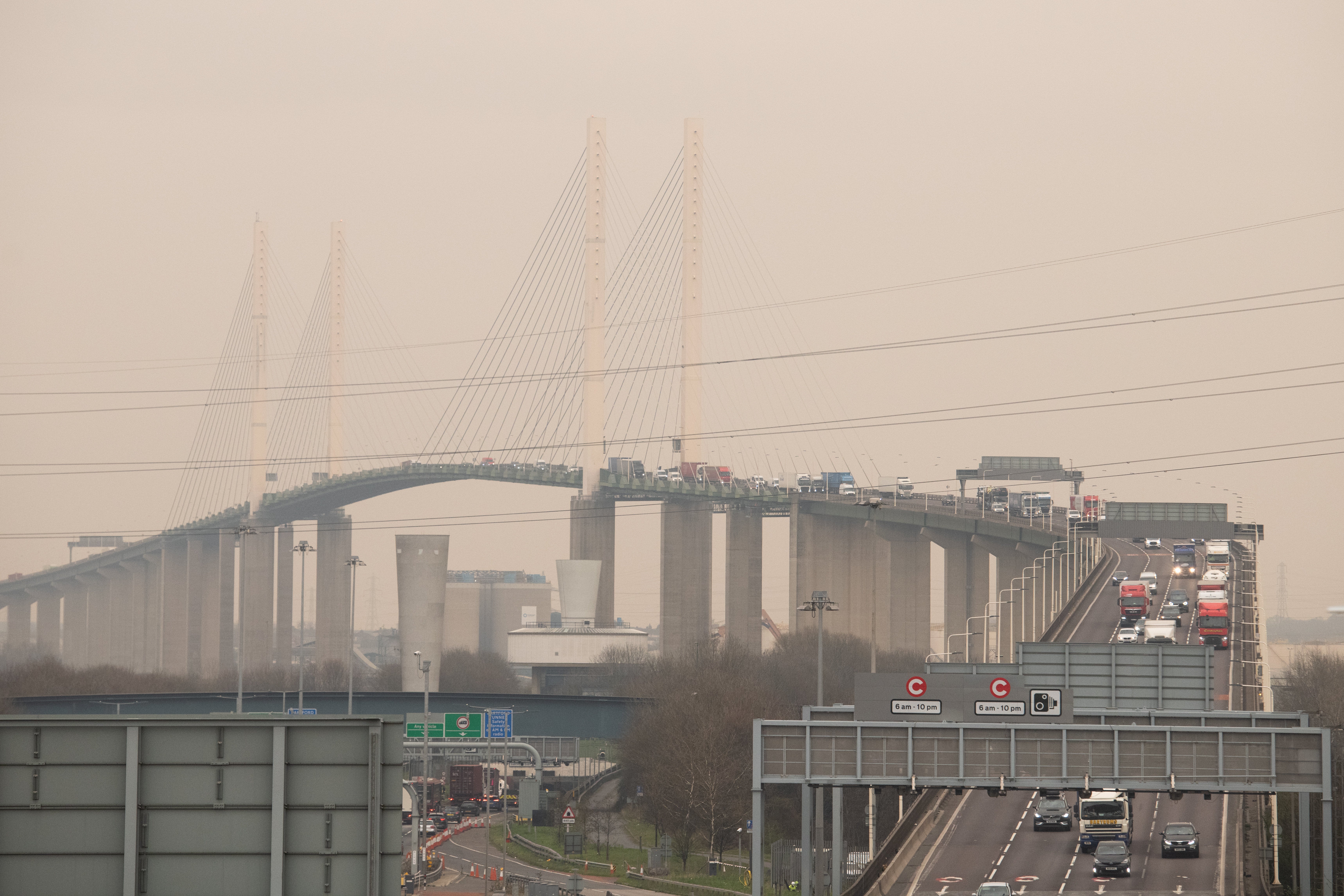Why are UK skies turning ‘dusky orange’?
Dust cloud turns skies ‘very dusky orange’ in parts of southern England

Skies in the UK have been tinted orange and yellow as a Sahara dust cloud moves through Europe.
Hazy and colourfuel hues were spotted among the clouds across parts of southern England, including London, on Wednesday.
This is being caused by a mixture of sand and dust from the Sahara being blown across Europe - which has also turned skies in Spain bright orange as it moves north.
Dust clouds originating from the North African desert usually reach the UK several times a year, according to the Met Office.
Images were shared of hazy orange and yellow skies across southern England on social media, as people noticed different hues overhead.
Twitter users shared pictures of the sky overlooking London on Wednesday, saying it was a “very strange dusky orange” and “taking on a distinctly orange tinge”.
The Met Office said the clouds would be most visible at sunset and cars may be blanketed with dust in areas where there are rain showers.
As well as being linked to colourful skies, these dust clouds can affect air quality.
But Richard Miles from the Met Office said the forecasters were not expecting significant impacts from this dust cloud.
“The most likely would be on the cloudscapes at sunset, but as conditions are likely to be generally overcast and wet for much of the day this is unlikely to amount to much,” he said. “There are no air quality warnings.”
He added: “People in the south might find a bit of dust left on their cars as the rain washes it out of the skies today.”
Sahara dust - which gets blown across the Atlantic Ocean, as well as towards Europe and elsewhere in Africa - plays a crucial role in the natural world, absorbing and reflecting solar energy and fertilising ecosystems, according to Nasa Earth Observatory.
The Met Office says it reaches the UK when big dust storms in the desert happen alongside southerly wind patterns.
Scientists say dust clouds will reach their smallest size in 20,000 years this century due to warmer oceans as a result of the climate crisis. This can create a feedback loop leading to more global warming, as there are less particles to reflect the sun in smaller dust clouds.